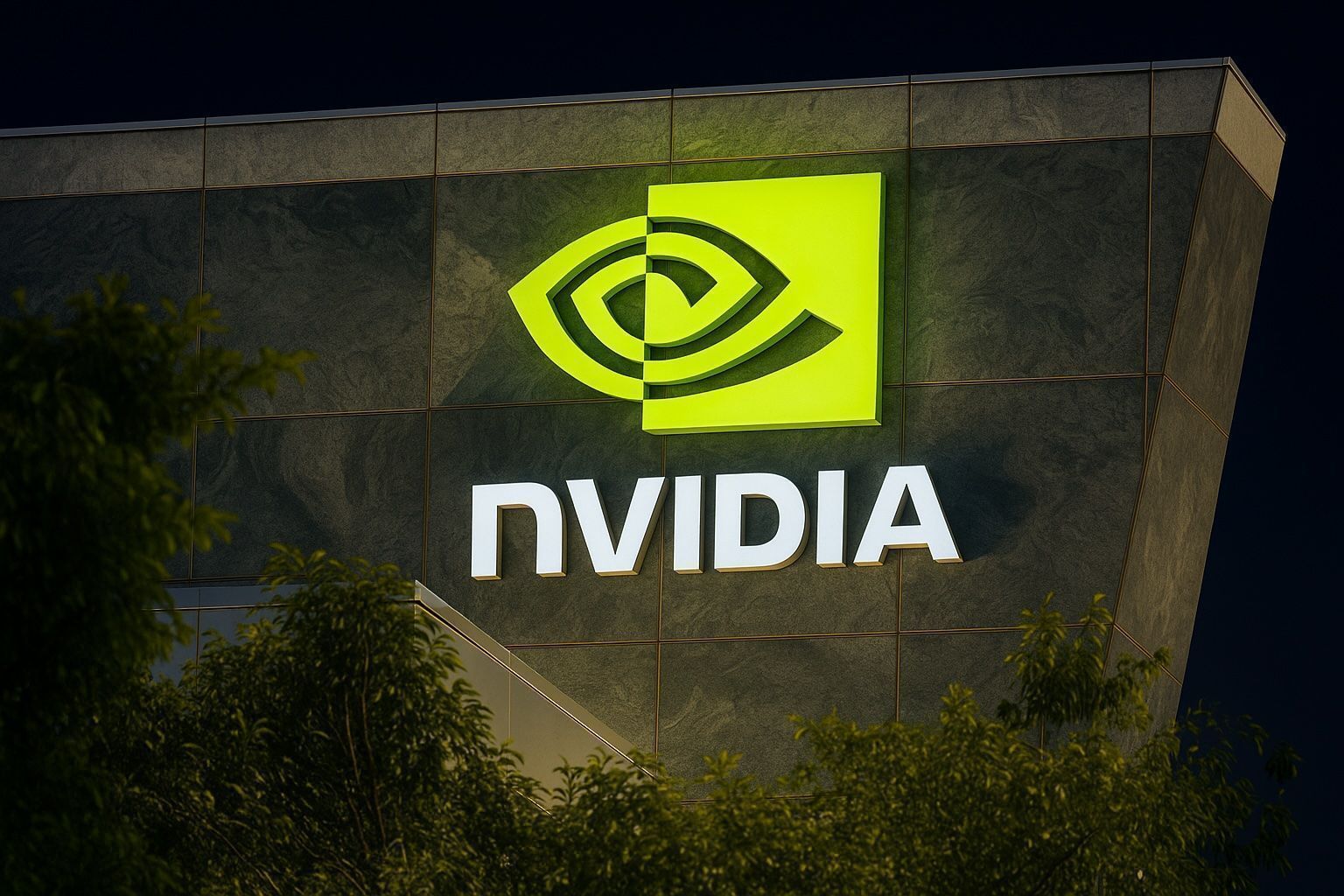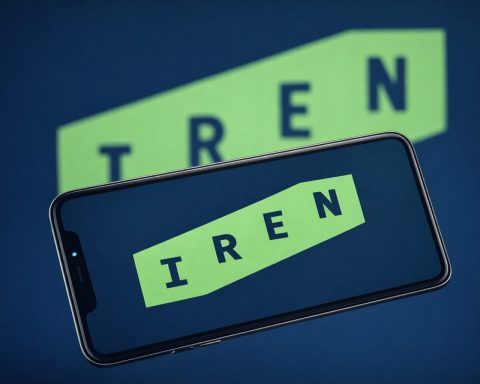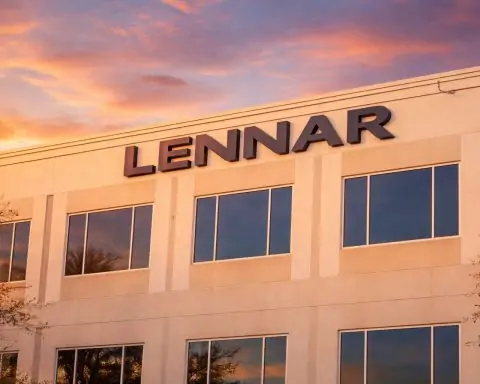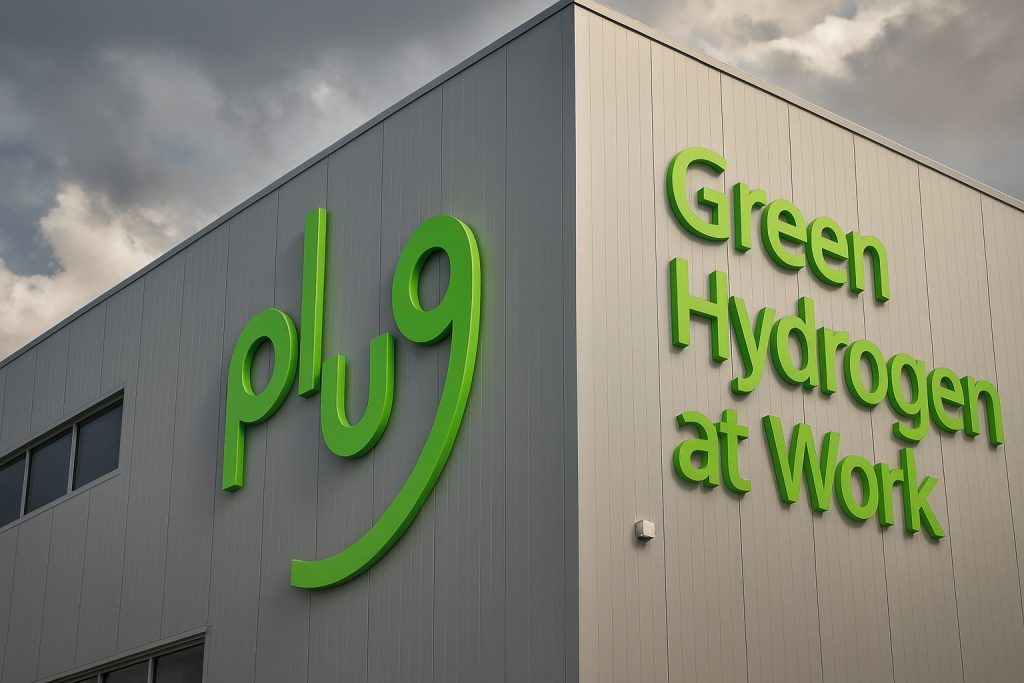- Current Price (Oct 16, 2025): Around $180–184 (closed $184.87 on Oct. 15) [1] [2].
- Year-to-Date Gain: About +30% YTD, far outperforming the S&P 500 [3].
- Market Cap: About $4.37 trillion (24.3B shares outstanding at ~$180) [4].
- Recent Highs: Hit an all-time intraday peak near $184 in late Sept [5], pulled back slightly into mid-Oct.
- Big AI Deals: Announced a $100B investment/supply pact with OpenAI (10 GW of chips) [6], a $5B stake in Intel to co-develop CPUs/GPUs [7], and joined a consortium (with Microsoft, BlackRock, etc.) buying $40B Aligned Data Centers for AI capacity [8].
- Earnings: Q2 FY2026 (July’25) revenue $46.7B (+56% YoY) with booming data-center sales [9]. Jensen Huang praised the new Blackwell AI chips and ramping “revolutionary” NVLink systems [10].
- Analyst Views: Wall Street is very bullish. Consensus is a “Strong Buy” with average targets ~$225 (≈25% upside) [11], though some bulls (e.g. HSBC’s Frank Lee) foresee far more – Lee lifted his price target to $320 (78% above current) [12], citing massive AI chip demand.
- Regulatory/Global Context: U.S. approved new Nvidia chip exports (licenses to UAE [13] and resuming China sales of the tailored H20 GPU [14]), while China has cracked down – sending inspectors to ports to scrutinize Nvidia chips [15] and even opening an antitrust probe [16] [17].
Nvidia Stock & Market Performance
Nvidia’s stock is trading high in October 2025. It closed at $184.87 on Oct. 15 [18], up slightly from the prior day, and was around $180–183 in early trading on Oct. 16 [19]. The week of Oct. 10–16 saw some profit-taking: NVDA hit an intraday high near $195 on Oct. 10 [20], then retreated into the low-$180s, but remains well above levels from earlier in 2025. Overall, Nvidia is up roughly 30% YTD, vastly outperforming the S&P 500 [21]. (For context, the 52-week range is ~$86–195 [22].) Trading volumes have been heavy (205–268 million shares daily recently [23]), reflecting strong investor interest.
Several factors are driving the recent moves. In late September, Nvidia hit record highs on major AI news [24], then eased back as tech stocks broadly corrected. Analysts note that “high valuations and interest-rate jitters” have spurred some profit-taking in growth stocks, including NVDA [25]. Still, most observers see the pullback as a breather. As of mid-October, NVDA trades at roughly 50× forward earnings [26] – expensive, but analysts argue the booming AI outlook justifies it (see below).
Breakthrough AI & Data-Center Partnerships
This week’s biggest catalyst for Nvidia was mega-deals in AI infrastructure. On Sept. 22, Nvidia and OpenAI announced a landmark partnership: Nvidia will invest up to $100 billion in OpenAI and supply at least 10 gigawatts of its GPU systems [27] [28]. OpenAI’s CEO Sam Altman emphasized, “Everything starts with compute” – meaning Nvidia’s chips will be at the heart of future AI breakthroughs [29]. The market reacted strongly: Nvidia stock spiked ~4.4% on the news [30]. Analyst Matt Britzman (Hargreaves Lansdown) noted that “every gigawatt of AI data center capacity is worth about $50 billion in revenue”, implying the OpenAI tie-up could be a $500 billion project in the long run [31]. That underscores just how huge analysts view the prize.
Nvidia also cemented a historic alliance with Intel in mid-September. It agreed to invest $5 billion in Intel stock and jointly develop future CPUs and GPUs [32] [33]. Intel will produce custom x86 chips linked via NVLink to Nvidia’s GPUs, effectively bridging Nvidia’s accelerators with Intel’s processors [34]. CEO Jensen Huang noted he and Intel’s new management had been collaborating for months. The Intel deal alone sent Intel’s stock up 23%, and Nvidia shares jumped ~3.8% on the news [35] [36]. Together, these moves deepen Nvidia’s ecosystem: it locks in OpenAI (the world’s highest-profile AI customer) and taps Intel’s manufacturing muscle.
On Oct. 15, Nvidia was also part of a $40 billion AI data-center deal. BlackRock announced an investor consortium (including Microsoft and Nvidia) would acquire Aligned Data Centers – a U.S. operator with ~80 data centers (5 GW of capacity) – for $40B [37]. This “AI Infrastructure Partnership” (also backed by Abu Dhabi’s MGX fund and Elon Musk’s xAI) aims to “deliver the infrastructure necessary to power the future of AI,” in BlackRock CEO Larry Fink’s words [38]. By investing in physical data-center real estate, Nvidia ensures it has the capacity for all the GPU machines that fast-growing AI workloads will demand.
Finally, even big cloud companies are adopting new chip tech. For example, last month Meta said it will build custom AI servers using Arm-based CPUs (not Nvidia’s) for recommendation engines [39] – an Arm deal worth noting for the industry, though Nvidia GPUs still dominate most AI training. All these deals highlight a “landing structure” around Nvidia: customers are investing billions to secure Nvidia-driven AI infrastructure.
Earnings and Financial Snapshot
Nvidia’s latest earnings far exceeded expectations. For Q2 FY2026 (quarter ended July 27, 2025), it reported record revenue of $46.7 billion (up 56% YoY) [40] [41], driven almost entirely by AI server chips. Data center sales alone were $41.1B (+56% YoY) [42], reflecting strong demand for the new “Blackwell” GPU platform. Jensen Huang highlighted that Blackwell “delivering an exceptional generational leap” with demand “extraordinary” [43]. On those results, full-year sales have more than doubled to ~$130.5B (with $72.9B net income) [44] – unheard-of growth for a semiconductor giant.
Margins also exploded: GAAP gross margin was 72.4% [45], though slightly down from the peak, as Nvidia invested heavily in inventory for its AI chip rollout. The company generated huge free cash flow – returning $24.3B to shareholders in H1 via buybacks/dividends [46] – and the board has just approved another $60B buyback program. (Dividends remain tiny at $0.01/share.) In short, Nvidia is a cash-printing powerhouse.
Nvidia’s guidance has generally been cautious, but analysts expect this AI boom to continue. Even without new official guidance, management’s enthusiasm (and stock-performance) signals confidence.
Analyst Commentary & Price Targets
Wall Street is overwhelmingly bullish on NVDA. Indeed, Nvidia is ”the AI ecosystem play of choice,” according to Evercore, and virtually all analysts rate it a Buy [47]. Consensus price targets cluster in the $205–225 range (roughly 15–25% above mid-October levels) [48] [49]. For example, TipRanks reports a Strong Buy consensus (35 Buys, 1 Hold, 1 Sell) with an average target of about $225 [50]. That implies roughly 25% upside from today’s price.
Some analysts see even more room. Most notably, HSBC’s Frank Lee now has a $320 price target [51]. He pointed to Nvidia’s pipeline and chip output, and argued that global AI demand (including $250–400B in GPU sales over coming years) supports a much higher value [52]. Lee projects FY2027 data-center revenue of ~$351B (vs. consensus $258B) and EPS ~$8.75 (vs $6.48) [53]. In his view, that justifies a target ~78% above current levels.
Other experts echo the optimism. After the OpenAI deal, analysts said NVDA had locked in every gigawatt of AI capacity (worth ~$50B each) [54] and was still accelerating growth. Bernstein’s Stacy Rasgon cautioned about “circular” funding concerns from Nvidia investing in its customer [55], but even he acknowledged the deal ensures huge volumes of future chip sales. Bank of America reiterated that Nvidia is “well-positioned for healthcare and AI”, expanding into new compute markets [56]. Morgan Stanley remains positive over both the short- and long-term, arguing NVDA should continue climbing despite near-term worries [57]. In short, the Street expects NVDA to keep powering higher.
Technology Landscape and Competition
Nvidia’s lead in AI GPUs is massive. As one tech report notes, Nvidia has an “almost monopoly” in cloud AI computing – virtually every major cloud provider relies on its GPUs [58]. Its CUDA software ecosystem and years of R&D give it a steep moat. Rivals are scrambling: AMD launched its new MI300 AI chips and acquired chip startups, but they still lag Nvidia in raw performance and software support [59]. Intel’s own GPU efforts stumbled, leading to this cooperation with Nvidia [60]. Some cloud players (Google TPUs, Amazon’s in-house chips) and Chinese firms are building alternatives, but none has dented Nvidia’s leadership in high-end AI training.
The semiconductor industry is broadly surging on the AI wave. Nvidia’s stellar growth comes amid strong demand for chips across the board – memory (Micron shares have also jumped) and other chip stocks. Even so, analysts caution valuations are stretched: they remind investors that Nvidia now trades at about 50× earnings [61], meaning its price already reflects a lot of future growth. A pullback or tech-sector rotation could weigh on the stock. Macro factors also loom: Fed officials warn equity markets are “fairly valued,” and rising Treasury yields have recently pressured growth tech [62].
On balance, most investors think the AI opportunity justifies the premium. NVDA’s run up has coincided with a broader shift: companies and governments worldwide are pouring money into AI infrastructure. Morgan Stanley now projects global AI infrastructure spending could hit ~$400B this year [63], and Nvidia is at the center of it.
Geopolitical and Regulatory Issues
Nvidia’s fortunes are also entwined with geopolitics. Trade tensions and export rules have been a mixed bag. In August, the U.S. Commerce Dept. lifted an export ban on Nvidia’s H20 GPUs to China, issuing licenses to resume shipments [64]. That removed a headwind: Nvidia had warned the China ban would cut about $8B from revenue [65]. Meanwhile, the U.S. has been striking deals with allies: in early October it approved multi-billion-dollar Nvidia chip sales to the UAE under a new AI partnership [66], and even agreed to let the UAE import up to 500,000 advanced Nvidia chips a year (starting 2025) [67]. The White House touts these as key parts of its tech diplomacy (President Trump’s recent Gulf trip included chip deals with Saudi Arabia as well).
China’s response has been more aggressive. In mid-September, Chinese regulators opened an antitrust probe into Nvidia [68], and in October customs officials began strict inspections of Nvidia AI chip imports [69]. FT reports said customs teams at major ports are scanning each Nvidia H20 and RTX Pro 6000D shipment [70], and even halting older chip deliveries that might breach US curbs. China wants to promote domestic chipmakers, and has ordered companies to pause Nvidia purchases amid these probes [71]. For now, about 13% of Nvidia’s sales (at least before China bans) came from China, so any sustained blockage could dent growth forecasts. Nvidia does offer a reduced-capability “RTX6000D” model for China [72], but so far adoption has been limited.
In summary, trade policy swings are a wild card. The possibility of further export relaxations or new deals (e.g. a Trump/GOP push to increase China chip sales) versus Beijing’s countermeasures keep investors on alert. For now, the AI boom has outweighed these worries, but it’s a factor to watch.
Outlook: How Far Can NVDA Go?
Wall Street generally expects Nvidia to keep charging ahead in the coming quarters. In the near term (to late 2025), analysts see more double-digit growth. The consensus target near $225 suggests Nvidia could trade around that by year-end [73]. If AI demand continues (and deals like the OpenAI and BlackRock ones close as planned), many foresee at least low-$200s or higher.
Looking further out, forecasts diverge. If Nvidia’s dominance endures, bulls say big numbers lie ahead. For example, the top HSBC price target of $320 reflects expectations of much stronger 2026–27 financials [74] [75]. Barclays has estimated Nvidia’s stock could still rise ~35% if global AI spending hits a “$2 trillion wave” [76]. On the other hand, some caution that competitive or macro headwinds could emerge.
In any case, Nvidia’s story – AI-driven growth, partnerships, and surging profits – means even skeptics are bracing for a volatile ride, not a slump. As one strategist put it, Nvidia’s role in the AI revolution is now “baked in” to the market’s expectations. With emerging data-center partnerships and unprecedented chip demand, many investors believe Nvidia’s run is far from over [77] [78].
Sources: Recent market data and news from Reuters (including Breakingviews and Technology News sections) [79] [80] [81] [82], the Nvidia investor press kit [83] [84], and industry analysis from TechStock²/TS2.tech [85] [86] [87]. These provide the latest quotes, price targets, and commentary on NVDA stock and NVIDIA’s AI-driven expansion.
References
1. www.investing.com, 2. www.reuters.com, 3. ts2.tech, 4. www.reuters.com, 5. ts2.tech, 6. www.reuters.com, 7. www.reuters.com, 8. www.reuters.com, 9. ts2.tech, 10. nvidianews.nvidia.com, 11. www.tipranks.com, 12. www.tipranks.com, 13. www.reuters.com, 14. www.reuters.com, 15. www.reuters.com, 16. ts2.tech, 17. www.reuters.com, 18. www.investing.com, 19. www.reuters.com, 20. www.investing.com, 21. ts2.tech, 22. www.reuters.com, 23. www.investing.com, 24. ts2.tech, 25. ts2.tech, 26. ts2.tech, 27. www.reuters.com, 28. www.reuters.com, 29. www.reuters.com, 30. www.reuters.com, 31. www.reuters.com, 32. www.reuters.com, 33. www.reuters.com, 34. www.reuters.com, 35. www.reuters.com, 36. www.reuters.com, 37. www.reuters.com, 38. www.reuters.com, 39. www.reuters.com, 40. nvidianews.nvidia.com, 41. ts2.tech, 42. nvidianews.nvidia.com, 43. nvidianews.nvidia.com, 44. ts2.tech, 45. nvidianews.nvidia.com, 46. nvidianews.nvidia.com, 47. ts2.tech, 48. ts2.tech, 49. www.tipranks.com, 50. www.tipranks.com, 51. www.tipranks.com, 52. www.tipranks.com, 53. www.tipranks.com, 54. www.reuters.com, 55. www.reuters.com, 56. 247wallst.com, 57. 247wallst.com, 58. ts2.tech, 59. ts2.tech, 60. ts2.tech, 61. ts2.tech, 62. ts2.tech, 63. www.reuters.com, 64. www.reuters.com, 65. www.reuters.com, 66. www.reuters.com, 67. www.reuters.com, 68. ts2.tech, 69. www.reuters.com, 70. www.reuters.com, 71. www.reuters.com, 72. www.reuters.com, 73. www.tipranks.com, 74. www.tipranks.com, 75. www.tipranks.com, 76. ts2.tech, 77. www.reuters.com, 78. www.reuters.com, 79. www.reuters.com, 80. www.reuters.com, 81. www.reuters.com, 82. www.reuters.com, 83. nvidianews.nvidia.com, 84. nvidianews.nvidia.com, 85. ts2.tech, 86. ts2.tech, 87. ts2.tech







